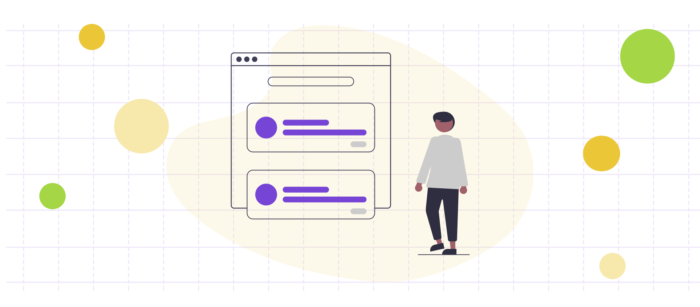Driving Donor Loyalty: How to Calculate Donor Retention Rate and Raise More

Introduction
As a nonprofit organization, you know that fundraising plays a critical role in achieving your mission's success. However, when it comes to reaching your ambitious fundraising goals, you may tend to focus on donor acquisition as the secret to growth. While donor acquisition is important, having a narrow focus on it can lead some nonprofits to overlook the significance of donor retention.
It's important to note that acquiring new donors is expensive, costing 50-100% more than retaining existing ones. Therefore, it's not enough to simply secure new donations; you need to build long-lasting relationships with donors to ensure that your organization has a reliable and sustainable source of funding.
You may be asking yourself, what is a good donor retention rate? In this blog, we will cover the industry standard and help you understand how your organization is performing.
The Importance of Understanding Donor Retention Rates
Donor retention statistics are important to understand how your organization compares to industry standard. Donor retention rate is a measurement of the percentage of donors who continue to give to your organization over a specific period. This metric demonstrates how effective your nonprofit is at retaining donors and building enduring relationships with your donor network and supporters to guarantee ongoing support for your mission. In recent years, the donor retention rate benchmark has remained steady at around 40-50%, which means that your organization's donor attrition could mean you're losing up to 60% of your donors every year.
How to Calculate Donor Retention Rate for Your Organization
To calculate your organization's donor retention rate, you can use a simple formula that is applicable to any nonprofit. Start by identifying the number of donors who contributed in the current period and compare it to the previous period. It's essential to select a time period that aligns with your organization's needs, but analyzing the year-over-year donor retention rate tends to provide the most accurate results.
Once you've determined the number of donors, you can calculate the donor retention rate by dividing the number of donors who gave in both periods by the number of donors who contributed in the previous period. That number is then multiplied by 100 to show you your organization's donor retention rate.
Sounds simple right? Let’s dive deeper into donor retention rates and how they can help your organization reach its fundraising goals.
The Vital Role of Donor Retention Rate in Sustaining Nonprofits
It's crucial for your nonprofit organization to understand your donor retention rate, as it plays a vital role in building and sustaining your donor base. A high average donor retention rate indicates that you're retaining more of your supporters, which translates to dependable and steady funding in the long run. You can use the donor retention rate as a benchmark or KPI to gauge your success in cultivating relationships with your supporters, and as an indicator that the stewardship activities you're using are effective.
Maintaining a healthy donor retention rate for your organization offers several benefits, such as:
Higher Revenue
By maintaining a high donor retention rate, you can actually increase your revenue over time. Retained and repeat donors are likely to give more than one-time supporters, which boosts your average gift amount and overall revenue. In fact, recurring donors or repeat donors typically give an average of 40% more than first-time donors. As a result, a healthy donor retention rate can significantly influence your nonprofit's financial stability and sustainability. This allows you to allocate more resources towards your mission and achieve a greater impact in your community.
Cost Savings
A high donor retention rate can also significantly reduce costs for your nonprofit organization. Acquiring new donors can be expensive, requiring significant investments in marketing and advertising. By retaining more of your existing donors, you can reduce these costs and allocate resources towards other mission-critical activities.
Stronger Donor Relationships
Maintaining a high donor retention rate can help your nonprofit organization build stronger, long-lasting relationships with your donors. Retained donors tend to feel more invested in your organization and its mission, which makes them more likely to continue giving and potentially increase their contributions over time.
By focusing on keeping your donor retention rates high, you can better understand your donors' motivations, interests, and preferences and tailor your communications and outreach efforts accordingly. This personalized approach can help build trust and loyalty among your supporters, ultimately leading to a stronger and more engaged donor base.
The Impacts of a Low Donor Retention Rate
As a nonprofit organization, you may experience significant consequences on your fundraising efforts and overall impact if you have a low donor retention rate. A low donor retention rate means that you are losing more supporters than you are retaining, resulting in a decrease in revenue and a less stable donor base.
A low donor retention rate can also indicate underlying issues with your organization's fundraising strategy or donor engagement efforts. Here are some of the consequences of a low donor retention rate that you may encounter:
Decreased Revenue
If your nonprofit organization has a low average donor retention rate, you may experience a decrease in funding. When donors don't feel connected or engaged with your mission, they are less likely to continue giving. This can lead to a cycle of constantly seeking out new donors to replace those who have stopped giving, which can be both time-consuming and expensive.
As mentioned, new donors tend to give less than retained donors, meaning that your nonprofit may need to acquire more donors to maintain the same level of funding. This can put a strain on your fundraising efforts, leaving less time and resources to focus on your mission-critical activities.
Struggle in Reaching Fundraising Goals
Having a low donor retention rate can make it challenging for you to achieve your nonprofit's fundraising goals. Retained donors are more likely to give larger gifts and make multiple donations over time, which can add up to a significant amount of funding for your organization. When you lose donors, you also miss the opportunity to receive additional contributions from them, making it more difficult to reach your fundraising goals. This can put a strain on your nonprofit's finances and make it challenging to fund critical programs and initiatives.
Additionally, a low donor retention rate can signal to potential supporters that your organization is not effectively engaging with its donors, making it less attractive to give. As a result, your nonprofit may struggle to attract new donors and build a stable donor base.
How to Calculate and Analyze Your Donor Retention Rate
Now that we have covered the importance of a donor retention rate and why nonprofits should strive to keep theirs as high as possible, the donor retention rate formula is quite simple. Let’s dive into the steps to calculate your organization’s rate:
1. Determine the Time-Frame
Decide on the time period for which you want to calculate the donor retention rate. Most nonprofits calculate this on a yearly basis, however, if you’re interested in getting more granular, you can break down your donor retention rate quarterly.
2. Determine the Number of Donors in the Previous Period
Now that you have decided on the time frame you want to measure, you’re going to have a “previous period” (ie. the time frame that you’re comparing against) and a “current period” (ie. the time that you’re actively seeking to understand your donor retention rate within). Start by counting the number of donors who gave to your organization in the previous period. For example, if you are calculating the donor retention rate for 2022, you would count the number of donors who gave to your organization in 2021.
3. Determine the Number of Donors in the Current Period
Next, you will need to count the number of donors who gave to your organization in the current period. If you’re following along with the previous example, this would be the number of donors that gave to your organization in 2022.
4. Determine the Number of Retained Donors
Now that you have your count from both time periods, it’s time to dive deeper into your data and identify the number of donors who gave in both the previous and current periods.
In this step, you should have the lists of donors from each time period side-by-side in a spreadsheet and look for duplicates between the 2 lists. In this phase, it’s important to determine what your unique identifier is to determine if the donors are the same person. To do this successfully, you should avoid using names and instead use email addresses, phone numbers, or constituent IDs.
5. Divide the Number of retained Donors by the Number of Donors in the Previous Period
Next, you’re going to divide the number of retained donors by the number of donors in the previous period and multiply by 100. This will show you your donor retention rate as a percentage and allow you to compare it against industry standards.
6. Interpret the Results
Analyze the results to understand your organization's donor retention rate. A higher percentage indicates that your nonprofit is retaining more donors, while a lower percentage indicates that you are losing more donors.
To calculate your donor retention rate successfully, it’s important to have donor management and fundraising software, such as Keela, that maintains your donor records, updates them in real-time, and can provide all of the information that you need to calculate your donor retention rate accurately.
How to Use Donor Retention Rate to Guide Your Fundraising Strategy
The most crucial aspect of calculating your donor retention rate is to use it as a guide for your fundraising and donor retention strategies, as well as to identify areas for improvement that can lead to increased donor retention. Nonprofits can utilize donor retention rate in their fundraising strategies in several ways, including:
Understanding How to Personalize Communications with Donors
When planning to personalize your communications, many nonprofits look at several factors to build their segments such as why do people donate to their organizations, what is someone's capacity to give, etc. You can use your donor retention rate to guide the donor communications you send by customizing your messages to better engage and retain donors. For instance, you can tailor your messages based on the donor's giving history. Donors who have given consistently over time may appreciate more detailed updates on the impact of their contributions. On the other hand, new or lapsed donors may need more information about your organization's mission and programs to better understand how their support can make a difference.
Additionally, you can use your donor retention rate to inform the frequency and timing of your communication efforts, such as sending regular updates to retain donors and focusing on re-engagement efforts for lapsed donors.
To personalize your communications effectively, it’s critical that your donor database has integrated email communications tools, such as Keela’s, to easily segment your donors, target your outreach and automate donor stewardship journeys.
Creating Exclusive Opportunities for Your Loyal Supporters
You can also use your donor retention rate to create unique experiences for your most loyal donors. By recognizing the same donors, who have consistently supported your organization over time, you can show your appreciation and establish a deeper connection with them.
For example, you can invite them to exclusive events, provide them with special recognition, or offer personalized communication and engagement opportunities. You can also use their feedback to customize your programs and services to better meet their needs and interests. By creating distinctive experiences for your most loyal donors, you can cultivate a sense of community and belonging, which can lead to continued giving and advocacy on your behalf.
It's important to recalculate your donor retention rate on a regular basis (e.g., yearly or quarterly) to determine the effectiveness of your fundraising and donor retention strategy, make adjustments as needed, and boost donor loyalty.
Fundraising Strategies for Improving Your Donor Retention Rate
Once you have done the work to calculate your donor retention rate, you may find that your donor retention rate is lower than industry standards. Don’t panic, because there are several ways that your organization can work to improve your donor retention rate such as:
Regular Communication with Donors
By staying in touch with your donors and providing them with regular updates on the impact of their contributions, you can keep them engaged and invested in your organization's mission.
Regular communication can also provide opportunities to express your gratitude and acknowledge the important role that donors play in your organization's success. You can use a variety of channels to communicate with your donors, such as email, social media, direct mail, and phone calls.
By tailoring your communication to the preferences of your donors and providing them with opportunities to give feedback, you can build stronger relationships and encourage continued support over time.
Identifying and Re-Engaging At-Risk and Lapsed Donors
Identifying and re-engaging at-risk and lapsed donors can significantly improve your nonprofit's average donor retention rates. By analyzing your donor retention rate and identifying donors who have stopped giving or are at risk of lapsing, you can take targeted steps to re-engage them. For example, you can reach out to these donors with personalized messages and offers, such as exclusive opportunities or updates on the impact of their past contributions. You can also solicit their feedback to understand why they stopped giving and make changes to your fundraising strategy or donor engagement efforts to address their concerns.
Additionally, you can use data and analytics to identify patterns and trends in donor behavior, allowing you to identify at-risk donors before they lapse and take preventive measures to retain them.
Conclusion
In conclusion, prioritizing your donor retention rate and investing in effective, actionable donor retention strategies is critical for your nonprofit organization. Your donor retention rate provides valuable insights into donor engagement and fundraising success. A high donor retention rate indicates that you are effectively engaging with your supporters and building a committed, loyal donor base.
Remember to regularly monitor your donor retention rate, analyze your results, and make adjustments to your strategies as needed. By building a strong, sustainable donor base, you can achieve a greater impact in your community and move closer to achieving your mission.
If you’re interested in learning about how Keela’s donor management and fundraising platform can help you boost your average donor retention rates, reach out to us here.
.svg)



